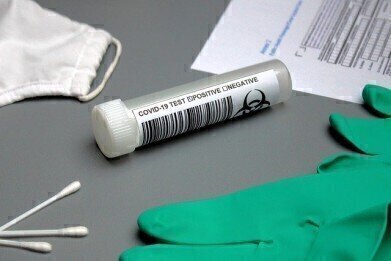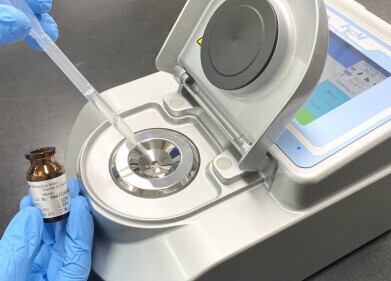Laboratory Products
When is the Best Time to Test for COVID-19?
Aug 07 2020
Since emerging from Wuhan in December 2019, COVID-19 has claimed more than 700,000 lives. As the infectious disease continues to spread, flattening the curve has never been more important. While testing plays an important role in managing transmission rates, researchers from Johns Hopkins Medicine are warning tests carried out too early in the course of infection increase the risk of false negatives.
Negative test no guarantee, warn experts
The findings were published in the journal Annals of Internal Medicine, with co-author Lauren Kucirka explaining how testing too early for SARS-CoV-2 can result in a negative result, even if the patient is infected. Kucirka stresses that high-risk patients who have been exposed to the virus should be treated with extreme caution, especially if they’re presenting COVID-19 symptoms.
"A negative test, whether or not a person has symptoms, doesn't guarantee that they aren't infected by the virus," says Kucirka, an obstetrics and gynecology resident at Johns Hopkins Medicine. “How we respond to, and interpret, a negative test is very important because we place others at risk when we assume the test is perfect. However, those infected with the virus are still able to potentially spread the virus.”
67% false negative rate during first four days of infection
The analysis reviewed RT-PCR test data from seven previous studies featuring respiratory swab samples from 1330 patients. Short for reverse transcriptase polymerase chain reaction, RT-PCR testing relies on swabs to detect traces of a virus. While RT-PCR is reliable, during the early stages of infection when virus levels are low it can fail to pick up on infected cells. As a result, false negatives can be produced.
Specifically, the chances of a patient producing a false negative after contracting the virus are 67% if the test is carried out within the first four days of infection. After symptoms appear, the false negative rate drops to around 38%. On average, tests were most accurate eight days after infection, with a false negative rate of 20%.
“Important to understand the limitations” say experts
"We are using these tests to rule out COVID-19, and basing decisions about what steps we take to prevent onward transmission, such as selection of personal protective equipment for health care workers," says Kucirka. "As we develop strategies to reopen services, businesses and other venues that rely on testing and contact tracing, it is important to understand the limitations of these tests."
From epidemiology to pharmaceutical research, science is at the vanguard of public health advances. To find out more about the latest Dynamic Light Scattering techniques don’t miss ‘Optimising DLS Measurements for Protein Characterisation’ with insight from Carlo Dessy and Dr. Daniel Seeman on behalf of Testa Analytical Solutions e.K.
Digital Edition
Lab Asia 31.2 April 2024
April 2024
In This Edition Chromatography Articles - Approaches to troubleshooting an SPE method for the analysis of oligonucleotides (pt i) - High-precision liquid flow processes demand full fluidic c...
View all digital editions
Events
Apr 28 2024 Montreal, Quebec, Canada
May 05 2024 Seville, Spain
InformEx Zone at CPhl North America
May 07 2024 Pennsylvania, PA, USA
May 14 2024 Oklahoma City, OK, USA
May 15 2024 Birmingham, UK






.jpg)











